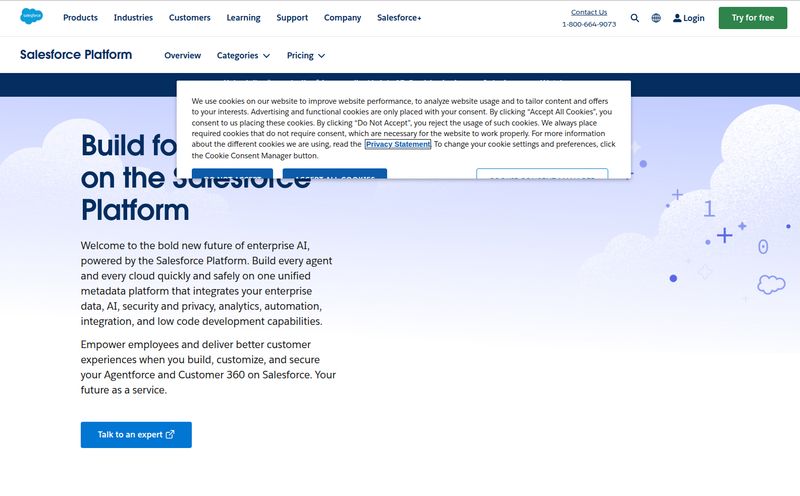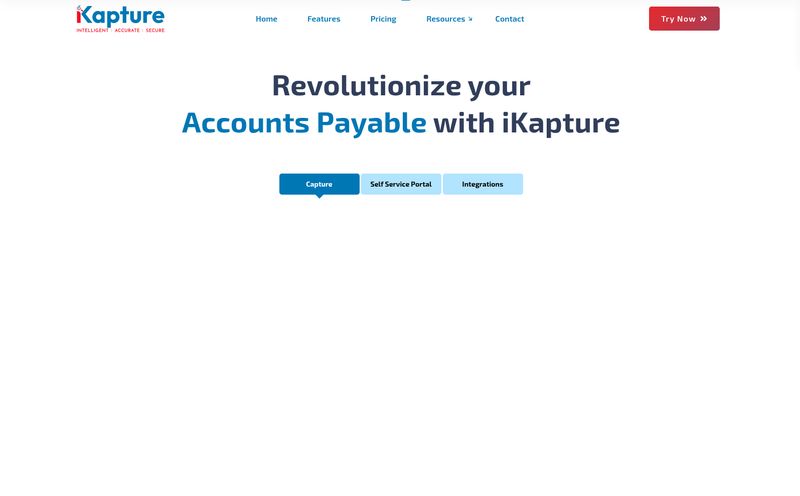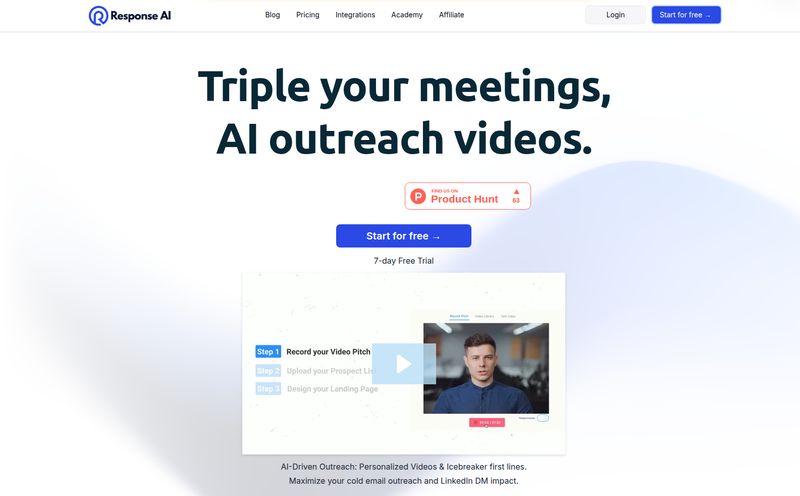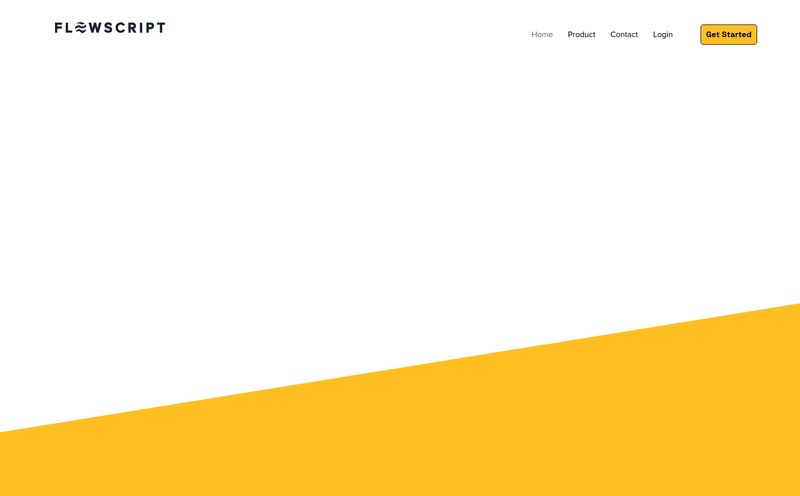Pricing in e-commerce can feel like a total nightmare. For years, I’ve watched clients and colleagues tear their hair out, glued to spreadsheets, manually checking competitor sites. It's a frantic, exhausting game of digital chicken. You drop your price by a dollar, they drop theirs by two. Who wins? Usually, nobody. It’s a race to the bottom that erodes margins and makes you question all your life choices.
We've all been there, right? Relying on a gut feeling, a complicated VLOOKUP formula, or just copying what the biggest guy in the market is doing. But that’s not a strategy; it's a reaction. So when I started hearing whispers about AI-driven pricing tools, my ears perked up. The latest one to cross my desk is Prycing, a platform that claims to use artificial intelligence to help you price smarter, not just lower. But does it live up to the hype? I decided to take a closer look.
What Exactly is Prycing, Anyway?
First off, let's clear something up. Prycing isn’t just another repricer. We’ve seen those for years—simple tools that automatically adjust your prices to be the cheapest. That's old news. Prycing pitches itself as a market intelligence platform. Think of it less like a reactive robot and more like a data analyst that works for you 24/7, tirelessly scanning the market to find that perfect sweet spot.
The core idea is to move beyond the simple “are we the cheapest?” question and start asking, “what is the optimal price for this porduct right now?” A price that maximizes your chance of a sale without sacrificing your profit margin. And the best part for many of us? It’s a no-code experience. You don’t need to be a developer or a data scientist to make it work. That’s a huge plus in my book, as I’d rather spend my time on strategy than wrestling with APIs.
The Features That Actually Matter
A tool can have a million features, but only a few ever really move the needle. From what I’ve seen, Prycing hangs its hat on a few powerful concepts.
The AI-Powered Brain Behind the Operation
This is the secret sauce. Prycing talks about using “deep learning models” to generate its insights. Now, for most of us, that's a bit of a black box. But what it means in practice is that the system isn’t just following simple `if/then` rules. It’s analyzing trends, market elasticity, and competitor behavior to suggest prices. It’s trying to understand the why behind the numbers, which is a big leap from just reading the numbers themselves. The goal is to get you ahead of the curve, not just keep up with it.
Keeping an Eye on the Competition (Without Losing Sleep)
Yes, it tracks competitor prices. That’s table stakes. But what’s interesting here is the promise of smart tracking. It’s not about pulling data from every random seller on the web. It's about identifying your key competitors and understanding their strategies. This is crucial. A race-to-the-bottom dropshipper isn't your real competitor if you're a brand focused on quality and service. The platform's effectiveness, of course, hinges on the quality of this data. Garbage in, garbage out, as they say. If the competitor data is spot-on, you're golden. If not, the AI's suggestions might be a little... off.

Visit Prycing
It's Not Just About Sales, It's About Profit
This, for me, is the most important part. I’ve seen so many businesses chase revenue at all costs, only to find out they’re not actually making any money. Prycing puts a heavy emphasis on profit margin optimization. The dashboard gives you insights into your margins and sales trends, helping you identify which products are your cash cows and which are just bleeding you dry. It's a shift in mindset from “how many can we sell?” to “how much can we make on each sale?” and frankly, it's a healthier way to build a sustainable e-commerce business.
Let's Talk Turkey: Prycing's Pricing Structure
Alright, this is where the rubber meets the road. Is this an affordable tool for everyone? Well, that depends on your scale. Prycing offers a few tiers, and it's pretty clear who they're targeting with each one.
| Plan | Price (Monthly) | Key Features |
|---|---|---|
| Prycing Standard | €49 | Unlimited product feed, support, basic API access, and campaign identification. |
| Prycing Professional | €299 | Everything in Standard, plus integration support, optional Repricer/Dynamic Pricing, and the AI-powered competitor insights. |
| Prycing Enterprise | Custom | All Professional features, premium support, and tailored scaling. |
My take? The Standard plan at €49 is a great entry point. It lets you get your data into the system, get a feel for the platform and start managing prices more efficiently. It's perfect for a smaller store that's outgrown its spreadsheet.
But the real power, the core AI features we've been talking about, seems to be locked behind the Professional plan at €299. That’s a significant jump. This is for serious businesses that understand that a 2-3% margin improvement on a large volume of sales will pay for the tool many times over. The optional dynamic pricing and AI competitor insights are what you're really paying for here.
My Honest Take: The Good, The Bad, and The Realistic
No tool is perfect. Prycing is no exception. After digging in, I see it as a powerful lever, but one you have to know how to pull.
On the plus side, the profit-first approach is a breath of fresh air. It feels like it was designed by people who have actually run an e-commerce business. The no-code interface is a massive win, making sophisticated tech accessible to non-tech founders. It’s like having a data scientist on your team without the six-figure salary.
However, let's be realistic. This isn't a magic wand. The setup requires some work. You need to integrate your product portfolio, which can be a hurdle for those with messy data. And as mentioned, its intelligence is directly tied to the accuracy of the competitor data it scrapes. You have to put a little faith in their system, or at least be willing to monitor it closely at first.
Who is Prycing Actually For?
I wouldn't recommend this to someone who just launched their first Shopify store last week. The cost, especially for the Professional plan, might be a bit steep, and you need a certain volume of sales for the insights to be truly meaningful.
Prycing feels tailor-made for established e-commerce businesses that have moved past the survival stage and are now focused on scaling intelligently. It's for the e-commerce manager who is tired of guessing and wants to bring a data-backed strategy to the boardroom.
If you're at a point where small percentage gains in margin translate into thousands of dollars in real profit, then investing in a tool like Prycing starts to look less like an expense and more like a high-return investment.
Frequently Asked Questions About Prycing
Is Prycing just another automatic repricer?
No, not really. While it has repricing capabilities (optional in the Professional plan), its main focus is on market intelligence and profit optimization. It provides insights to help you set the smartest price, not just the lowest one.
How difficult is the setup process?
It’s a no-code platform, so you won't be writing scripts. However, it does require integrating your product feed. If your product data is clean and organized, it should be straightforward. If it's a mess, you'll have some cleanup to do first.
Is the Professional plan really worth the price jump from Standard?
In my opinion, if you're serious about leveraging AI for a competitive edge, yes. The core AI-powered competitor insights and dynamic pricing options are in the Professional tier. The Standard plan is more for centralized price management, while Professional is for strategic optimization.
Can I trust the AI's pricing suggestions immediately?
I’d advise a “trust but verify” approach initially. Let the system run, monitor its suggestions, and compare them against your own expertise. Over time, as the AI learns more about your specific market and products, you can grant it more autonomy.
Does it work with platforms like Shopify or Magento?
The platform's website mentions extensive possibilities with API access, which generally means it can be connected to most modern e-commerce platforms. They also note they have standard integrations and will help make a connection if your party isn't listed, so it seems quite flexible.
Final Thoughts on the Pricing Predicament
Look, the days of winning on price alone are fading. Customers are savvier, and competitors are more numerous than ever. The future of e-commerce profitability lies in being smarter, not cheaper. Tools like Prycing represent that shift. It's not about firing and forgetting; it’s about augmenting your own business acumen with the power of artificial intelligence.
It's not a silver bullet. It requires an investment of both money and initial setup time. But for the right kind of business—one that’s ready to scale and prioritize profit—it could very well be the key to cracking the pricing puzzle once and for all.



